|
|
RADIOALUMNI.CA |
|
|
CANADIAN EPICS IN RADIOCOMMUNICATION ALUMNI WHO LIVED THE ADVENTURE OF RADIO WIRELESS TELEGRAPHISTS - SPARKS - RADIO PIONEERS RADIO OPERATORS - RADIO TECHNICIANS RADIO TECHNOLOGISTS - RADIO ENGINEERS RADIO INSPECTORS - SPECTRUM MANAGERS |
|
ÉPOPÉES CANADIENNES EN RADIOCOMMUNICATION LES ANCIENS QUI ONT VÉCU L'AVENTURE DE LA RADIO TÉLÉGRAPHISTES SANS FIL - PIONNIERS DE LA RADIO OPÉRATEURS RADIO - TECHNICIENS RADIO TECHNOLOGUES RADIO - INGÉNIEURS RADIO INSPECTEURS RADIO - GESTIONNAIRES DU SPECTRE |
So I left home at age 17 to take that commercial radio operator’s course in Saint John, NB and graduated in December 1956 with a Second Class Certificate of Proficiency In Radio which was upgraded to First Class in 1977. I then went to Moncton, N.B. airport for a couple of months of training as a surface weather observer, then posted to Yarmouth, NS Aeradio (CYQI) as radio operator/weather observer. This was a 2-man station open 24/7. From there, I was transferred to Yarmouth Marine Radio (VAU) then to the LURCHER lightship (VGA) anchored 17 miles offshore. Then it was back to VAU where I was transferred to Seal Island Radio Beacon (VGY), a 1-man station for 14 months. It was back to VAU then transferred to the Canadian Government Ship “C.D. Howe” (CGSS) for the 1959 Eastern Arctic Patrol, a 3-month voyage.
In the Yarmouth-New England ferry service I served on VDND, on the M.V. “Marine Cruiser” (GSOC), the M.V. “Marine Evangeline” (C6CA) and later VCQK and finally on the second “Bluenose” (C6DZ). The “Marine Evangeline” had two call signs because she changed from Bahamian to Canadian registry. In the spring of 1957 I joined the Yarmouth ARC where I'm still a member and have helped train many new hams over the years. When I.C. instituted the Delegated Examiner program in the early 1990s, I became an examiner for the various amateur qualifications. In the late 1970s, our club took in our first “White Caner” who was later followed by about 10 others, some of whom are now silent keys. Nowadays I work a bit of HF, mostly 80 and 20 meters some CW and some SSB. Still take part in Field Day and a couple of local HF contests. Living on a small lot I could only put up a G5RV and a 2-meter vertical, so no powerhouse operation from this QTH.”
|
|||||||||||||||
|
Related Links --- |
|||||||||||||||


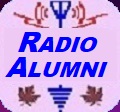
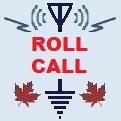
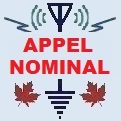
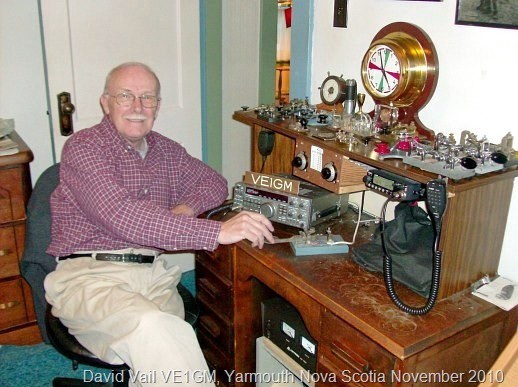 “I
was born in Charlottetown, PEI. Early in 1956, DOT had an urgent need for
operators and they sponsored a course at the vocational school in Saint John,
NB. It was normally a 2-year course but they squeezed it down to 10 months in
order to get us on the job more quickly. There were about 30 men in the course
and about 15 of us graduated on the first writing, some of the others went back
to the school in 1957 and graduated in that year. We were paid $150.00 per month
while training and had to agree to stay with DOT for 3 years. 3 years sounded
like a long time when you were 18 years old, but now 54 years have passed and
many of my classmates and all of the instructors are silent keys.
“I
was born in Charlottetown, PEI. Early in 1956, DOT had an urgent need for
operators and they sponsored a course at the vocational school in Saint John,
NB. It was normally a 2-year course but they squeezed it down to 10 months in
order to get us on the job more quickly. There were about 30 men in the course
and about 15 of us graduated on the first writing, some of the others went back
to the school in 1957 and graduated in that year. We were paid $150.00 per month
while training and had to agree to stay with DOT for 3 years. 3 years sounded
like a long time when you were 18 years old, but now 54 years have passed and
many of my classmates and all of the instructors are silent keys.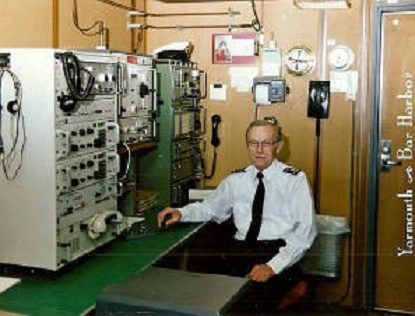 Returning to the Maritimes, I was stationed to Fredericton Aeradio as r/o and
weather observer. All these transfers and postings happened over a 3-year
period. When a permanent position on the M.V. “Bluenose” (VDND) became open I
applied for it and was accepted. I joined that ship on Boxing Day in 1959 and
remained in that service until early retirement in 1993.
Returning to the Maritimes, I was stationed to Fredericton Aeradio as r/o and
weather observer. All these transfers and postings happened over a 3-year
period. When a permanent position on the M.V. “Bluenose” (VDND) became open I
applied for it and was accepted. I joined that ship on Boxing Day in 1959 and
remained in that service until early retirement in 1993.